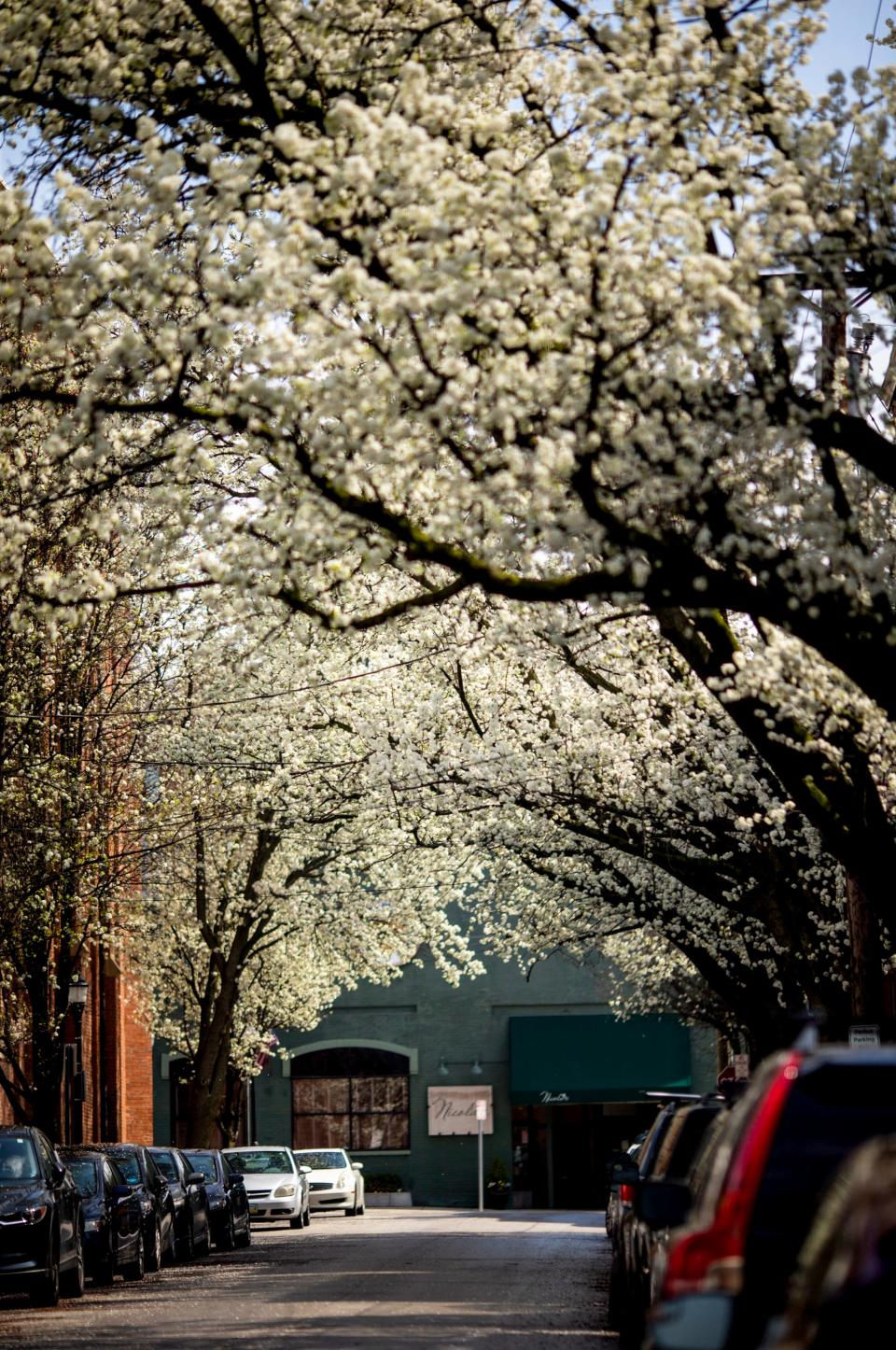Ohio's ban on Callery pear trees now in effect
Ohio earlier this month banned the sale and planting of ornamental Callery pear trees that experts say are crowding out native trees and shrubs.
Immediately recognizable for their white blossoms that bloom in the spring and carry a pungent odor, Callery pear trees are native to several countries in Asia and were first introduced to the United States in the early 20th century by the U.S. Department of Agriculture.
Starting in the 1960s, a variety of the Callery pear, the Bradford pear, experienced an explosion in popularity, according to Mike Hogan, an associate professor at Ohio State University. The trees were planted not only by gardeners and homeowners but also by municipalities on city streets.
But their population is hard to control, University of Cincinnati biologist Theresa Culley said in a news release announcing the ban’s implementation.

Once established, pear trees are hard to remove because of their long taproot, according to Culley. They can also grow quickly and tolerate a variety of wet, dry, sunny, or shady conditions.
“They’re extremely hardy. They can grow pretty much anywhere,” said Culley, who is head of the university’s department of biological sciences. “They have abundant flowers that attract all kinds of pollinators, so they end up with abundant fruit that birds disperse.”
The trees in 2018 were placed on Ohio's invasive species list, starting the clock for landscapers, growers and nurseries to replace their inventories. South Carolina and Pennsylvania have also passed bans that will take effect in 2024.
More:Ornamental pear trees are beautiful but they've got a dark side
William Kyle Natorp, president and CEO of the Cincinnati nursery Natorp’s, said in the news release that many property owners have already replaced pear trees.
“Customer demand disappeared when it was realized that this plant was an invasive issue. Our nursery stopped producing these trees. I think most nurseries did the same,” he said.
Hogan from Ohio State University recommends planting native trees such as serviceberry, native hawthorn or native crabapples in lieu of the Bradford pear.
Monroe Trombly covers breaking and trending news.
mtrombly@dispatch.com
@monroetrombly
This article originally appeared on The Columbus Dispatch: Why the Bradford pear tree is now banned in Ohio

